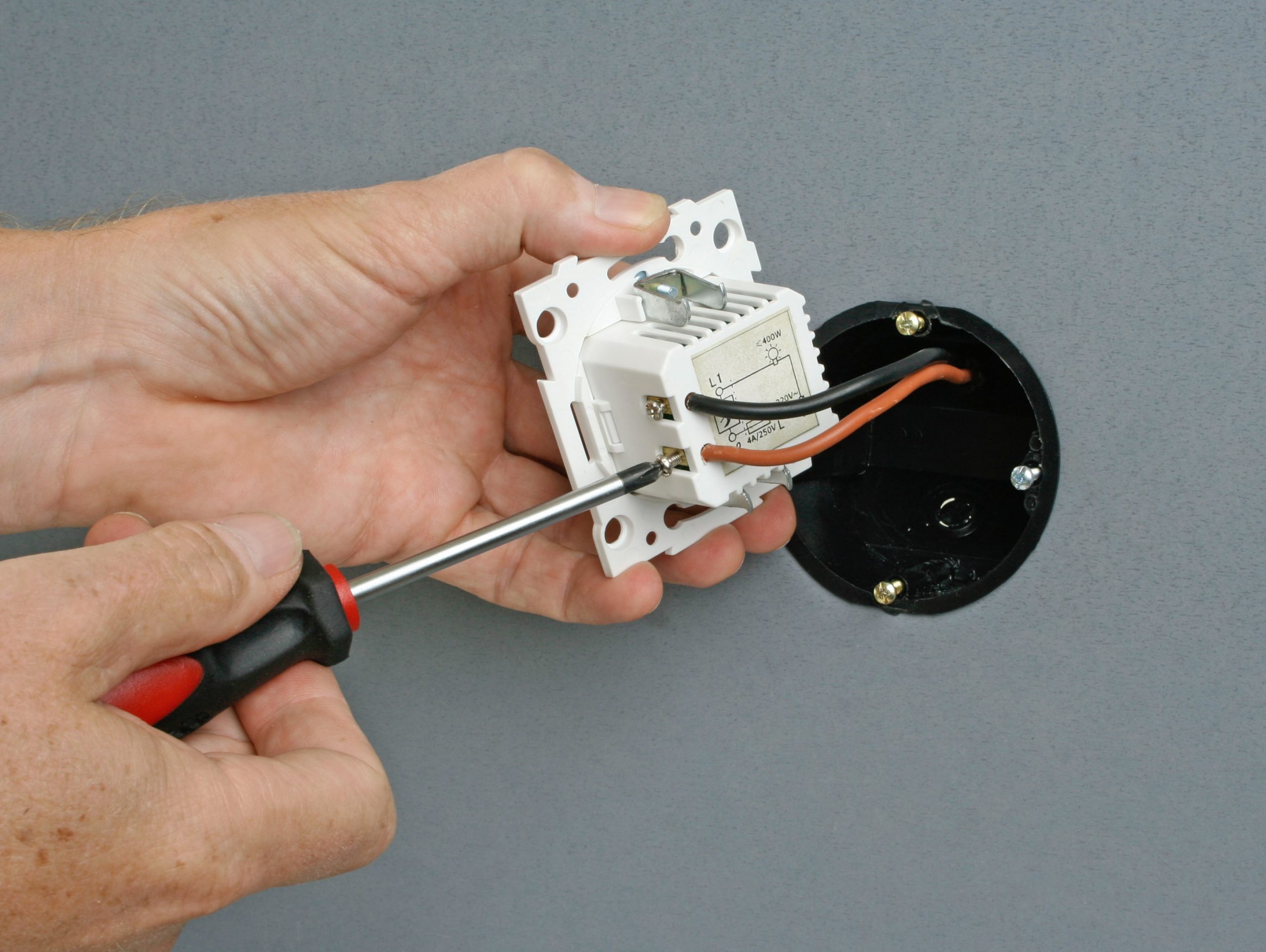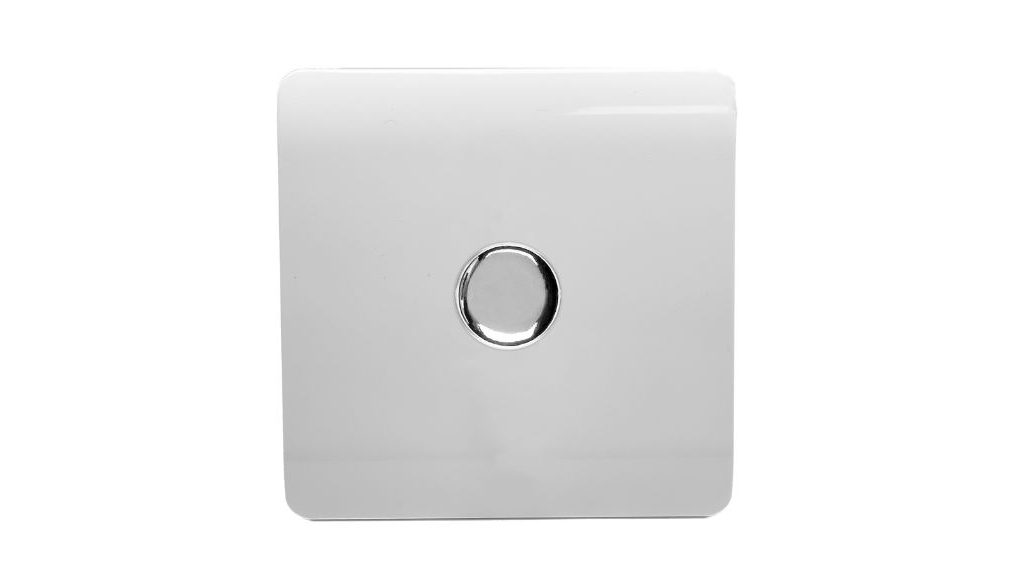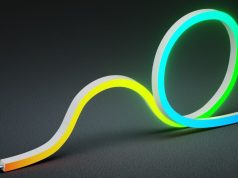Did you know that having dimmable lights has many benefits other than smoothly transitioning from bright to dim? One of the most significant advantages of having this function in your lighting system is making your lights even more energy-efficient! LED lights are already consuming ten times less power than other light fixtures. If you add a dimmer into the mix, the efficiency rate goes even higher because you don’t use as much energy when you have it at only 50% bright! It’s an excellent element to have because you don’t always need super bright lights every single time.
Aside from that, because your lights are not always 100% bright, the lifespan of your fitting extends beyond its estimated life expectancy. Because of this, you’re not only reducing your electricity bills, but you’re also cutting down on your maintenance cost!
So, now that you want a dimmer with your LED lights, the question is, can you use any dimmers? Do LED lights need a special dimmer?
Can I use any dimmer with my LED lights?
Unfortunately, not all types of dimmers are compatible with your LEDs. So, if you have a wall dimmer that’s installed in your home and has been around for ages, check first what type of dimmer that is before hooking up your lights. The dimmer you may have might be a leading-edge dimmer that’s used for halogen and incandescent bulbs. LED bulbs are only suitable for LED ready dimmers or trailing edge dimmers.

What is the difference between a leading-edge dimmer and a trailing-edge dimmer?
While there are many types of dimmers available, there are two that are notably more popular, leading-edge and trailing-edge dimmers. How do they differ?
Leading-edge dimmers are more famous than trailing-edge dimmers. They’ve been around longer and are used to dim mains halogen and traditional incandescent bulbs. This dimmer covers a higher wattage range (between 200W – 1000W), rendering them less likely to work with LED lights, but it can be possible if the prescribed tolerance is met.
Alternatively, trailing-edge or LED ready dimmers are designed mainly for use with LED bulbs. It’s the reason why they have the same characteristics, like the wattage range and digital makeup. The needed wattage for these dimmers is significantly lower, making them ideal for low-wattage LEDs. Again, you can also use a trailing-edge dimmer with an incandescent bulb if the wattage tolerance is met.
To make it easier for you, just check your bulbs’ compatibility. Most manufacturers thoroughly check their bulb’s compatibility with a wide range of dimmer switches. You can conveniently see the results on their websites.
What do you need to consider before setting up your dimming system?
Dimming your lights while you relax after a long day of work is one of the most satisfying things ever! So, to ensure that you won’t experience any fluke in your setup, here are some aspects that you need to consider.
Check if your light bulbs are dimmable
The first thing on the list is to check if the light bulb you plan to get is dimmable. A dimmable light bulb will work fine even if you have a non-dimmable circuit. However, a non-dimmable bulb will not work with a dimmable circuit. Instead of having a beautiful transition from different brightness levels, you’ll end up with a non-dimmable flickering light! You can check this information on the website of your supplier or on the packaging of the bulb itself.
Examine your present dimmer
You’ll know the compatibility of your dimmer switch through its type and minimum/maximum load range. As mentioned earlier, leading-edge dimmers are best suited for incandescent and halogen bulbs, while trailing-edge dimmers are ideal for LED lights.
Know how many bulbs your dimmer can hold
To identify how many bulbs are okay for your dimmer, divide the minimum and maximum load by ten. Then add the wattages of your LED bulbs to know how many can be hooked up with the dimmer. Do take note that the total wattage of the LED bulbs must exceed the calculated minimum wattage of the dimmer.
Get a professional’s help
If you’re really having a hard time understanding the correct lighting setup for your dimmer system, then get a professional’s help. It’s best to ask them directly instead of guessing. It will help you avoid wasting your money on parts that will not work together. Consult your supplier because they have more knowledge about which products will go well together. They can even recommend to you the most efficient way of setting up your dimming system!
Are all LED lights suitable for dimming?
Regrettably, not all LED lights are suited for dimming. The components of a dimmable and non-dimmable LED bulb are different. So, putting a non-dimmable LED bulb in a dimmable circuit and expecting it to work is like squeezing water from a stone. It will only give you endless disappointments and incredibly damaged electrics.
Although, this is not true if you put it in reverse. Using a dimmable bulb with a non-dimmable circuit is okay. Your lights won’t just dim, and it won’t destroy your electrics.
Why are my LED lights not dimming properly or flickering?
While there may be others, there are three most likely reasons why your LED lights are not dimming correctly.

Under loading the dimmer
You might have forgotten to check your dimmer and just replaced your old halogen bulbs with LEDs. If that’s the case, your dimmer will have larger minimum load requirements since halogen bulbs have a higher wattage count. Because of this, even with multiple LED bulbs, you may not still reach the necessary limit because of their inherently low wattage count. So, in this case, it’s best to replace your dimmer with the one that’s compatible with your LEDs.
Overloading the dimmer
This is one of the most common reasons why your lights are flickering. Some people forget to do the math and just assume that the number of LED bulbs they’re using is okay with the maximum load of the dimmer since they have a reasonably low wattage. It’s crucial that you don’t forget to calculate correctly because overloading is also bad for your entire lighting system.
Incompatible bulb and dimmer
While there are prescribed dimmers for specific types of lights, LEDs are particularly sensitive when it comes to compatibility. You may come across brands of dimmers that will not be compatible with your LED bulbs. So, check the bulb’s technical specifications to identify if your dimmer is compatible. Otherwise, you’ll be absolutely dissatisfied and just end up wasting your money.
There you go! Now that you know what type of dimmers to get with your LED lights, it’s time to visit our website, Simple Lighting, to start shopping! Aside from high-quality dimmers, we also have other lighting solutions that can help you address all your lighting needs!












